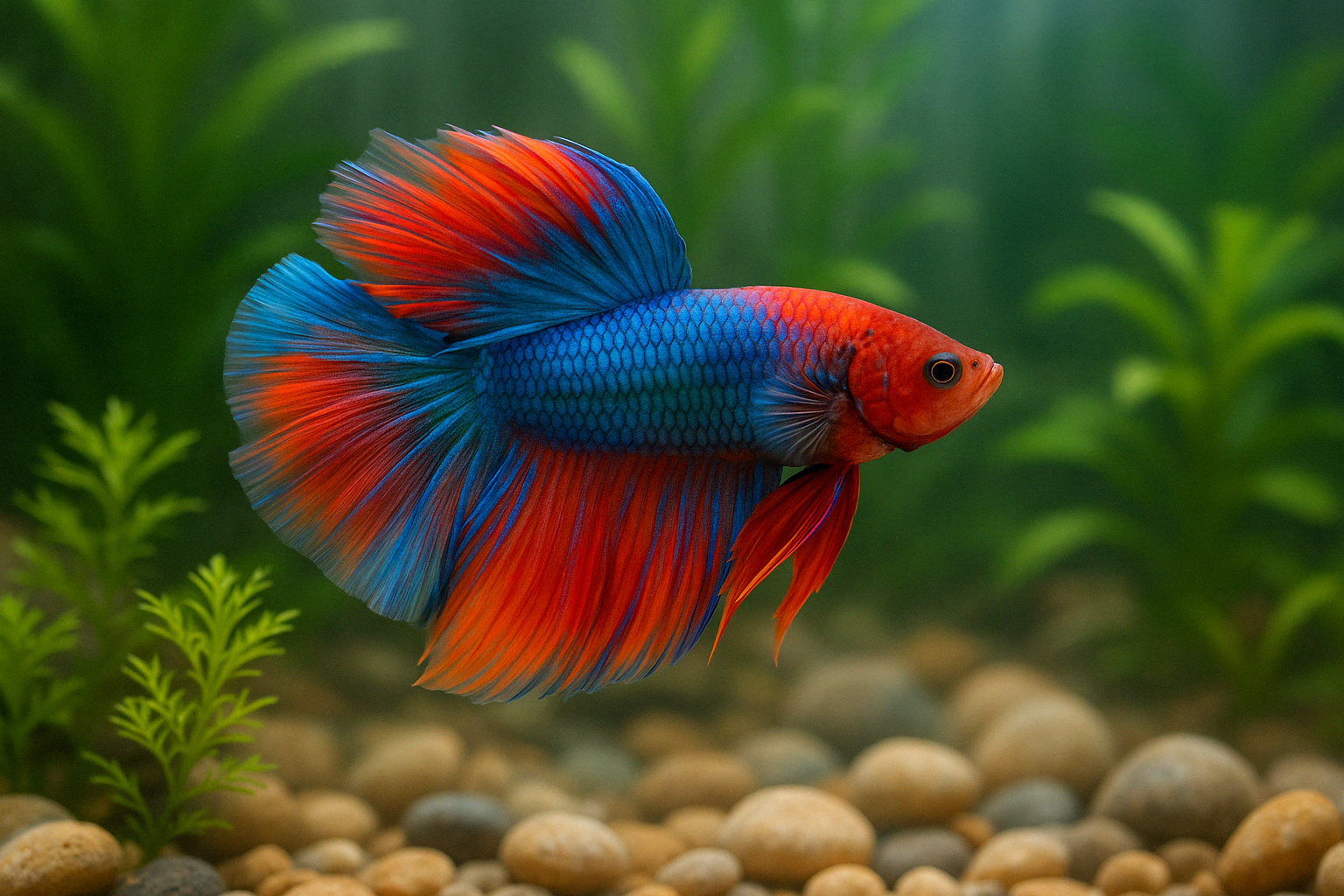Why Betta Fish Are So Popular
Betta fish (Betta splendens), commonly known as Siamese fighting fish, rank among the most sought-after freshwater species—especially for newcomers to aquarium keeping. Their brilliant color palette—ranging from fiery red and deep royal blue to iridescent green, pearl white, and multicolored marbling—combined with their flowing, veil-like fins, make them living works of art. Native to shallow waterways in Southeast Asia, Bettas possess a labyrinth organ that enables them to breathe atmospheric air, allowing survival in lower-oxygen environments. While that adaptability eases basic care, proper habitat and maintenance are critical to ensure they not only survive but thrive.
Tank Size: Minimum vs. Recommended
Absolute Minimum: 2.5 Gallons
A 2.5-gallon tank (≈10 L) is the smallest suitable home for a Betta, requiring diligent weekly water changes of at least 30 percent. Limited space complicates stable temperature control and filtration placement, and leaves little room for enrichment.
Ideal Size: 5 Gallons or More
A 5-gallon tank (≈20 L) provides significant advantages. The larger volume buffers against rapid shifts in water chemistry, maintains temperature more consistently, and accommodates a small heater, gentle filter, live plants, and hiding spots. Larger aquariums reduce stress, encourage natural behavior, and offer more freedom to explore.
Essential Betta Care
1. Aquarium Setup
- Tank: Minimum 5 gallons, with a tight-fitting lid to prevent jumping.
- Filter: Sponge or low-flow internal filter to maintain water quality without creating strong currents.
- Heater: Small submersible heater with thermostat to keep water between 75 °F and 82 °F (24 °C–28 °C).
- Substrate & Decor: Smooth gravel or sand, live or silk plants (Java fern, Anubias), ceramic caves, and floating logs for resting near the surface.
- Lighting: Moderate LED lighting to support plant growth and enhance coloration, on a timer for 8–10 hours per day.
2. Water Parameters and Maintenance
- Temperature: 75 °F–82 °F (24 °C–28 °C). Use a heater in all but consistently tropical climates.
- pH: 6.5–7.5; perform weekly testing to detect drift.
- Hardness: Moderate (3–5 dGH).
- Water Changes: 25–30 percent weekly; always dechlorinate and match temperature to tank water.
- Cycle the Filter: Establish biological filtration before introducing your Betta: ammonia → nitrite → nitrate.
3. Feeding and Nutrition
Bettas are obligate carnivores. Provide a varied, protein-rich diet:
- High-quality Betta pellets or micro-pellets (≥40 percent protein).
- Frozen or live treats: bloodworms, brine shrimp, daphnia.
- Feed 1–2 times daily, only what they consume within two minutes.
- Implement a one-day fast weekly to prevent constipation and bloating.
4. Tank Mates and Social Behavior
Male Bettas are highly territorial and should be housed alone. Female Bettas can form sororities (4–6 individuals) in at least a 10-gallon tank with abundant hiding places, but aggression remains possible. Peaceful roommates such as Corydoras catfish, small rasboras, or nerite snails may cohabit if the tank is spacious and densely planted; avoid fin-nippers and long-finned species like guppies.
5. Enrichment and Well-Being
Bettas thrive with mental stimulation and environmental complexity:
- Live Plants: Java moss, Amazon sword, and floating plants provide hiding spots and resting zones at the surface.
- Caves and Tunnels: Ceramic ornaments, coconut shells, or PVC pipes for exploration.
- Floating Leaf Hammocks: Broad-leafed plants or purpose-built hammocks let Bettas rest near the surface.
- Brief Mirror Interaction: One minute per day max to encourage fin-flaring—excess can cause stress.
- Toys and Training: Guide your Betta through small hoops or along fingers outside the glass to build recognition and trust.
Health Monitoring and Common Conditions
Bettas typically live two to four years, with peak care extending lifespans to five years or more. Watch for these ailments:
- Fin Rot: Ragged, discolored fins—treat promptly with salt baths and antibacterial medication.
- Ich (White Spot Disease): Tiny white spots—raise temperature to 82 °F and treat with antifungal/anti-parasite medication.
- Swim Bladder Disorder: Floating or sinking—fast for 24 hours, then feed deshelled peas or daphnia to clear blockages.
- Bacterial Infections: Cloudy patches or lethargy—consult your veterinarian for antibiotic options.
Fun Facts and Myths Debunked
Origins and Name
Betta splendens hail from Thailand, Cambodia, Vietnam, and Laos. The genus name derives from “Bettah,” an ancient warrior clan—apt for a fish noted for its combative displays.
Popularity in the U.S.
Bettas are the most common freshwater pet fish in America due to their low purchase cost (often $5–$15), minimal starter equipment needs, and breathtaking appearance. They are readily available in pet stores, aquarium shops, and even supermarkets.
Intelligence and Interaction
Contrary to the “lazy fish” stereotype, Bettas display curiosity, responsiveness, and can learn simple behaviors like following your finger, swimming through obstacles, or responding to feeding cues.
Bubble Nest Building
Male Bettas create nests of bubbles on the water’s surface when ready to breed. This bubble cluster safeguards fertilized eggs until fry emerge.
Conclusion
Betta fish combine vivid coloration, elegant fin display, and surprising resilience. By providing at least a 5-gallon aquarium, stable tropical temperatures, clean water, a high-protein diet, and regular enrichment, your Betta will flourish. Whether you’re a first-time aquarist or a seasoned hobbyist, adding a Betta splendens brings endless fascination and vibrant beauty to your home. Ready to design the perfect Betta habitat? Share your setup tips and tank photos in the comments!

